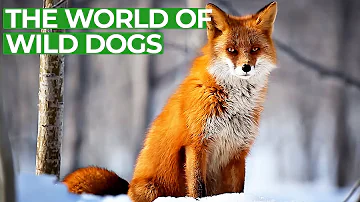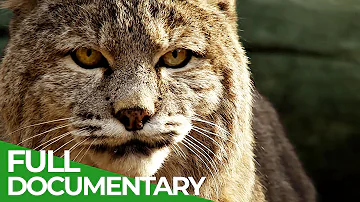
Cocker Spaniel (American)
Canis lupus familiaris

Meet the Cocker Spaniel (American)
The American Cocker Spaniel is a small to medium-sized breed of domestic dog known for its expressive eyes, luxurious silky coat, and cheerful disposition. Originally bred as a hunting and flushing dog, it has become a beloved family companion due to its gentle nature and playful energy. Characterized by its rounded skull, long ears, and feathered legs, the breed is highly adaptable, excelling in various dog sports and therapy work. American Cocker Spaniels are intelligent, eager to please, and thrive on human companionship, making them ideal pets for families and individuals alike.
Classification
Mammal
Habitat
Domestic households
Diet
Omnivore
Lifespan
12-15 years
Conservation
Least Concern
Weight
9-13.5 kg (20-30 lbs)
📖Fascinating Facts
Silky Coat
The American Cocker Spaniel's distinctive silky coat requires regular grooming to prevent matting and tangling.
Strong Sense of Smell
Historically used as hunting dogs, they possess a keen sense of smell and excel at scent work and tracking.
Show Dog Star
This breed is one of the most decorated at American dog shows, holding multiple 'Best in Show' titles.
📋Detailed Description
The American Cocker Spaniel is a compact, well-balanced sporting dog, typically weighing between 9–13.5 kg (20–30 lbs) and standing 34–39 cm (13.5–15.5 in) at the shoulder. Its most distinctive features include a domed, rounded skull, large, dark, almond-shaped eyes that convey a gentle expression, and long, pendulous ears covered in silky, feathered fur. The breed's dense, water-resistant double coat requires regular grooming and comes in a wide variety of colors and patterns, including solid, parti-color, and roan. Anatomically, the breed is characterized by a deep chest, muscular neck, and a moderately short back, allowing for agility and endurance in the field. The American Cocker Spaniel possesses a keen sense of smell and a strong instinct for flushing and retrieving game, traits inherited from its hunting ancestry. Behaviorally, it is known for its affectionate, sociable nature, forming strong bonds with humans and other animals. The breed is highly trainable, excelling in obedience, agility, and therapy work due to its intelligence and eagerness to please. Socially, American Cocker Spaniels thrive in family environments, displaying playful energy and adaptability to various living situations. Their gentle temperament and sensitivity make them particularly suitable for households with children and elderly individuals.
💡 Did you know?
Despite their friendly appearance, American Cocker Spaniels were originally bred for their skills in hunting and retrieving game birds.
🔬Research & Sources
🎭Behavior & Social Structure
American Cocker Spaniels are energetic and alert, displaying a blend of playfulness and attentiveness to their environment. Historically bred as flushing spaniels, they retain a strong prey drive, often showing interest in birds and small mammals during walks or play. Their feeding behavior is typical of omnivorous domestic dogs, with a preference for high-quality commercial diets supplemented by occasional treats. Socially, they are highly people-oriented, often following family members from room to room and seeking physical affection. They generally coexist well with other dogs and pets, provided they are properly socialized from a young age. Daily routines include periods of active play, walks, and rest, with a notable tendency toward separation anxiety if left alone for extended periods. The breed is known for its vocalizations, using barks and whines to communicate needs or alert to unfamiliar stimuli. Cognitive stimulation is important, as boredom can lead to destructive behaviors.
👶Reproduction & Life Cycle
American Cocker Spaniels reach sexual maturity between 6–12 months of age, with females typically coming into estrus twice a year. Mating behavior involves courtship rituals such as sniffing, licking, and play. The gestation period averages 63 days, after which litters of 3–7 puppies are born. Neonates are altricial, requiring intensive maternal care, including nursing and thermoregulation. Both breeders and responsible pet owners are advised to monitor for breed-specific reproductive issues, such as dystocia (difficult labor) due to the breed's compact build. Puppies are weaned at 4–6 weeks and begin socialization and basic training soon after. Responsible breeding practices emphasize genetic health screening to minimize inherited disorders such as progressive retinal atrophy and hip dysplasia.
🛡️Adaptations & Survival
Physically, the American Cocker Spaniel's long, low-set ears and feathered limbs are adaptations for moving through dense underbrush and water, aiding in flushing and retrieving game. The breed's keen olfactory senses are a result of selective breeding for scent detection, enhancing hunting efficiency. Their water-resistant coat provides protection against cold and wet conditions, while the compact, muscular build allows for agility and stamina during fieldwork. Behaviorally, their strong social instincts and high trainability are evolutionary adaptations to cooperative hunting and close human companionship. The breed's expressive facial features and vocalizations facilitate communication with humans, further strengthening the human-dog bond.
📚Research Sources
🎨Cultural Significance
The American Cocker Spaniel holds a prominent place in American culture, notably as the first breed developed primarily in the United States. It gained widespread recognition after winning Best in Show at the Westminster Kennel Club Dog Show in 1921 and 1940. The breed's popularity soared further after the release of Disney's 'Lady and the Tramp' (1955), featuring a Cocker Spaniel as a main character. In addition to its role as a companion animal, the breed has served as a therapy and assistance dog, providing emotional support in hospitals, schools, and disaster response settings. Symbolically, the Cocker Spaniel is associated with loyalty, gentleness, and family values. There are no significant mythological or traditional ritual uses, but the breed is a frequent subject in art, literature, and media.
🔬Recent Research & Discoveries
Recent scientific studies on American Cocker Spaniels have focused on genetic predispositions to inherited diseases, particularly progressive retinal atrophy, primary glaucoma, and autoimmune hemolytic anemia. Advances in canine genomics have allowed for the identification of specific gene mutations responsible for these conditions, enabling improved screening and breeding protocols. Behavioral research has highlighted the breed's high sociability and sensitivity to human emotional cues, making them effective therapy and assistance animals. Ongoing studies are examining the impact of early socialization and environmental enrichment on reducing anxiety-related behaviors. Additionally, veterinary research continues to explore optimal dietary and grooming practices to mitigate common health issues such as ear infections and obesity.
🎥Wildlife Videos

Wildlife - Just Wild Dogs | Free Documentary Nature
Wildlife - Episode 7: Just Wild Dogs | Wildlife Documentary Watch 'Wildlife - Episode 8' here: https://youtu.be/kglJpB4ei8o Run ...
Free Documentary - Nature

The Cocker Spaniel - Pet Dog Documentary
Cocker Spaniels are dogs belonging to two breeds of the spaniel dog type: the American Cocker Spaniel and the English Cocker ...
Best Documentary

Cocker Spaniels Sprinkler Time | Too Cute!
Although initially intimidated, these Cocker Spaniel puppies soon can't get enough of the sprinkler in their back garden. | For more ...
Animal Planet

Documentary:cocker spaniel!!!
Worldwide Wildlife

Yosemite - America's Most Spectacular National Park | Free Documentary Nature
Yosemite - America's Most Spectacular National Park | Wildlife Documentary Watch 'Yellowstone - The Breathtaking Beauty of ...
Free Documentary - Nature

Wildlife Stories: Love is in the Wild | SPECIAL | Free Documentary Nature
Wildlife Stories: Love is in the Wild | Special | Free Documentary Nature Watch 'Wildlife Stories: Talking to Survive' here: ...
Free Documentary - Nature
🌍Habitat Information
The Cocker Spaniel (American) typically inhabits Domestic households environments. Cocker Spaniel (American)s have adapted to their environments with specialized features and behaviors.
Primary Habitat:
Domestic households
More detailed habitat information will be available soon.
🛡️Conservation Status
The Cocker Spaniel (American) is currently classified as Least Concern. Conservation efforts are crucial for preserving this species for future generations.
Common Threats:
- 🏠Habitat loss and fragmentation
- 🌡️Climate change impacts
- 🎯Hunting and poaching
- 🏭Human-wildlife conflict
⚠️Threats & Conservation Challenges
As a domestic breed, the American Cocker Spaniel is not threatened in the wild, but faces challenges related to overbreeding, irresponsible breeding practices, and inherited health conditions. Common health issues include ear infections (due to pendulous ears), progressive retinal atrophy, cataracts, hip dysplasia, and autoimmune disorders. The popularity of the breed has led to periods of indiscriminate breeding, increasing the prevalence of genetic disorders. Obesity and dental disease are also concerns in pet populations. While the breed is classified as 'Least Concern' in terms of conservation, welfare challenges persist, particularly in puppy mills and poorly regulated breeding operations. Population trends are stable, with the breed remaining popular in North America and internationally.
🔬Scientific Classification
Scientific Name
Canis lupus familiaris
Classification Hierarchy
🔍 About Taxonomic Classification
Taxonomic classification is a hierarchical system used by scientists to classify and organize living organisms based on shared characteristics and evolutionary relationships.
The system moves from broad categories (Kingdom) to increasingly specific ones, with each animal's scientific name typically consisting of its Genus and species.
📝Community Notes
Share your observations and insights about the Cocker Spaniel (American) with our community of wildlife enthusiasts.
Join Our Community
Sign in to share your observations and connect with fellow wildlife enthusiasts.
Sign In to ContributeNo community notes yet
Be the first to share your observations about the Cocker Spaniel (American)!
Explore Cocker Spaniel (American)
Select a tab above to learn more about this amazing animal.
📸Photo Gallery
No photos available for this animal yet.
🌟Discover More Wildlife
Continue your journey of discovery with more fascinating animals from our database
